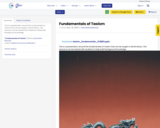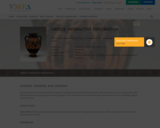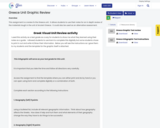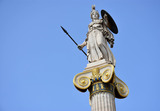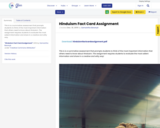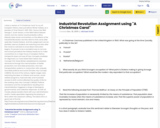I show a version of "A Christmas Carol" to my AP European History class just before Winter Holiday as a preview of Time Period 3. 1815-1914. I favour the 1984 George C. Scott version, or the 1999 Patrick Stewart version, but any version would probably suffice.
Nobody does social commentary on the effects of the Industrial Revolution and the reforms that came after quite like Charles Dickens. And this assignment can be partially used as students are watching and also after the movie to call back to once direct instruction begins. It's proven to be a wonderful way to not only end school just before the Holiday break but to make connections to a major focus in European History.
GoOpenVA does not have AP Key Concepts available for alignment, so I have listed them below:
Key Concept 3.1IC Great Britain established its industrial dominance through the mechanization of textile production, iron and steel production, and new transportation systems in conjunction with uniquely favorable political and social climates.
Key Concept 3.2IIIB By the end of the century, higher wages, laws restricting the labor of children and women, social welfare programs, improved diet, and increased access to birth control affected the quality of life for the working class.
Key Concept 3.3IIIA,B,D Political revolutions and the complications resulting from industrialization triggered a range of ideological, governmental, and collective responses.
As with all movies, please double check with your administrators and/or media specialists regarding the playing of films within the classroom setting. The below link is a good rule of thumb:
http://www.ala.org/advocacy/sites/ala.org.advocacy/files/content/copyright/fairuse/web-digital%20delivery%20in%20classroomrev3psa.pdf





